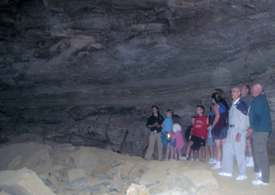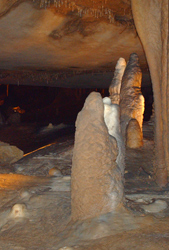 Humans have explored the unknown since the dawn of time. Caves are one of the only wonders that haven’t been completely explored. The world inside a cave is mysterious in many ways. The organisms living inside caves are adapted to thousands of years of evolutionary adaptations. Caves are also one of the only habitats on earth’s that haven’t been affected by human actions. Therefore, caves serve as natural laboratories where thousands of years of research has taken place.
Humans have explored the unknown since the dawn of time. Caves are one of the only wonders that haven’t been completely explored. The world inside a cave is mysterious in many ways. The organisms living inside caves are adapted to thousands of years of evolutionary adaptations. Caves are also one of the only habitats on earth’s that haven’t been affected by human actions. Therefore, caves serve as natural laboratories where thousands of years of research has taken place.
There are four main commercial caves in the Hoosier state, Blue Spring Caverns, Wyandotte Caves, Marengo Caves and Squire Boone Caverns. Each of those caves differs from the other in different ways. Blue Spring Caverns offers tours in custom made boats on arguably the longest underground river in the United States. Wyandotte Caves are one of the only cave systems in the country that has a rich archaeological history – like mining, and storage. Squire Boone Caverns has beautiful waterfalls and rivers that transport thousands of tons of water every day. Marengo Cave has beautiful structures, and at first sight people question if the structures inside the cave are carved by artists.
 Spelunking is not discouraged, but it is also not encouraged. Commercial caves in the 1800s served economical purposes, but today commercial caves also serve as edifices that help the public understand the environmental importance of these natural wonders.
Spelunking is not discouraged, but it is also not encouraged. Commercial caves in the 1800s served economical purposes, but today commercial caves also serve as edifices that help the public understand the environmental importance of these natural wonders.
The Cave environment is very fragile and its destruction results in the annihilation of the organisms, its natural beauty and the usable ground water. Therefore, just as we strive to protect mother earth’s surface, we should also safeguard the world underground.
 Choden is a Wabash College sophomore majoring biology. He is a Tibetan refugee who now calls Nepal home.
Choden is a Wabash College sophomore majoring biology. He is a Tibetan refugee who now calls Nepal home.
In photos:
Top right: Visitors at Wyandotte Caverns. Lower left: Stalagmites in Marengo Cave.